For more insightful articles
Sign up For Our Newsletters
In his newsletter, Philipp Reisner – LINBIT’s CEO, comments on industry news, community or partner activities, and internal LINBIT lab developments.
Additionally, subscribe to LINBIT COO Brian Hellman’s quarterly newsletter. Brian shares LINBIT insight into topics related to the business of open source, sharing plenty of lessons from his extensive experience.
Finally, the LINBIT blog is a great resource to learn more about our software and industry. Our Solutions Architects and Developers create many of the posts themselves, so head over there for our expert views.
Submit below.

DRBD-reactor over Pacemaker
DRBD-reactor is one of our younger projects, but did you realize it’s already three years old? For some projects, three years is not a lot,
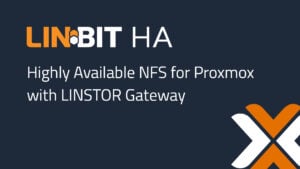
Highly Available NFS for Proxmox With LINSTOR Gateway
Attaching an NFS share to your Proxmox cluster is a convenient way to add reliable storage for backups, ISO images, container templates, and more. If
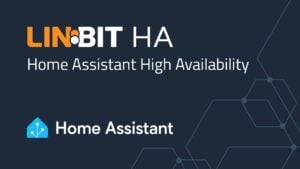
Home Assistant High Availability
So, you’ve gone down the rabbit hole of home automation. You’ve been getting deeper and deeper into Home Assistant and its ecosystem. You are configuring new IoT

How We Test DRBD
As I am still involved in DRBD development, this newsletter edition includes insights into how we test DRBD. Sometimes, testing begins with a bug in
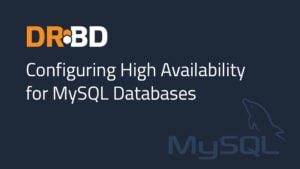
Configuring High Availability for MySQL Databases Using DRBD
Before MySQL version 5.5, released in December of 2010, MySQL only natively supported asynchronous replication which had the potential to lose data under certain conditions.

Conference & Software Updates
May is conference season. Kicking off the season, I gave a short presentation last week at a STAC research event in London. As you can imagine, it

Continuously Improving our Build Automation
Jia Tan owned the previous newsletter with their work on the XZ/ssh backdoor. I wanted to write about HashiCorp and Redis, and a common theme

Abstracting Persistent Storage Across Environments With LINBIT SDS
Kubernetes can be thought of as an infrastructure abstraction layer for on-premise and cloud computing. The applications you deploy into one cloud platform or on-premise
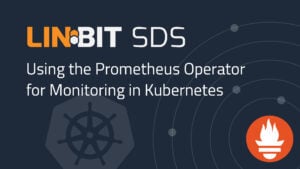
Using the Prometheus Operator for Monitoring LINBIT SDS in Kubernetes
Prometheus is a popular solution for Kubernetes monitoring and alerting. The kube-prometheus-stack project is a collection of Kubernetes manifests, Grafana dashboards, and Prometheus rules that provides an
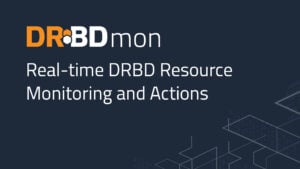
Monitoring & Performing Actions on DRBD Resources in Real-Time Using DRBDmon
One convenient way to work with and check DRBD® and its resources is by using DRBDmon. DRBDmon is an open source utility included with the drbd-utils software
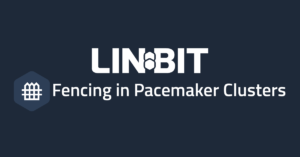
Using Fencing in Pacemaker Clusters on VirtualBox Hypervisors
This blog post will describe how you can configure the fence_vbox fence agent in high-availability (HA) Pacemaker development clusters running on VirtualBox for Linux. Fencing is an

XZ Backdoor & LINBIT Updates
Without question, the most drastic news event in the past two weeks was, of course, the backdoor in XZ Utils’ liblzma, which implements a backdoor
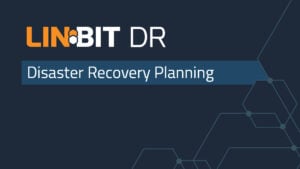
Disaster Recovery Is Not a Technology, It’s a Plan
Disaster recovery (DR) is often perceived as a purely technological solution implemented within storage or virtualization environments, thanks to aggressive marketing by software vendors. However,
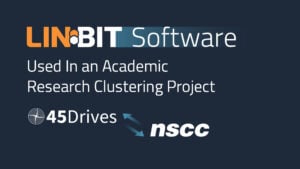
LINBIT Software Used In an Academic Research Clustering Project
We at LINBIT® are pleased to learn about a collaborative research project between 45drives, a data storage solutions company built on open source, and Nova Scotia Community

Using the DRBD Quorum Feature as an Alternative to Fencing in a Pacemaker Cluster
Implementing fencing is a way to ensure the consistency of your replicated data by avoiding “split-brain” scenarios. When communication between cluster nodes breaks, fencing prevents
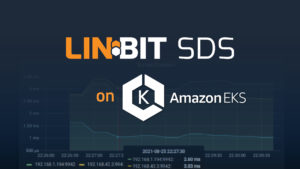
Filling the Gap: LINBIT SDS in Amazon EKS
Update: The full technical document described in this blog post has been updated to version 8.2 on 2024-04-06 to include enhancements made to the LINSTOR